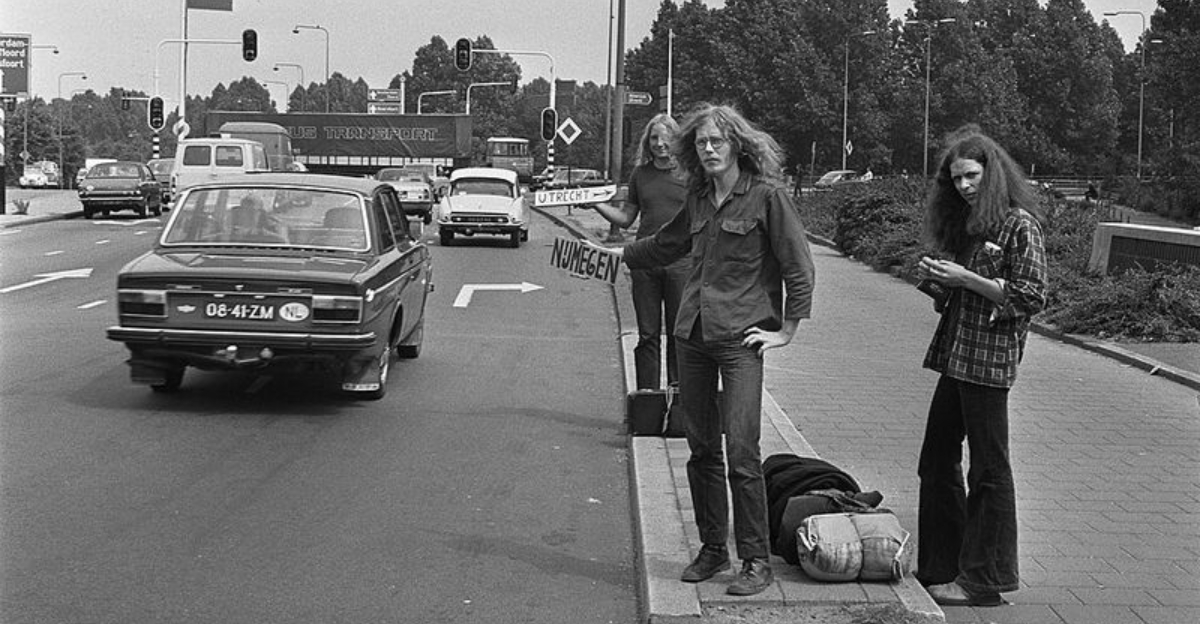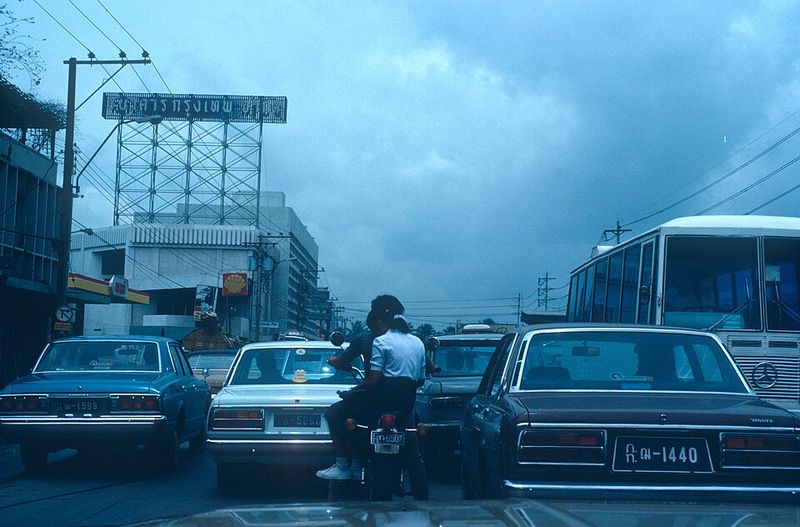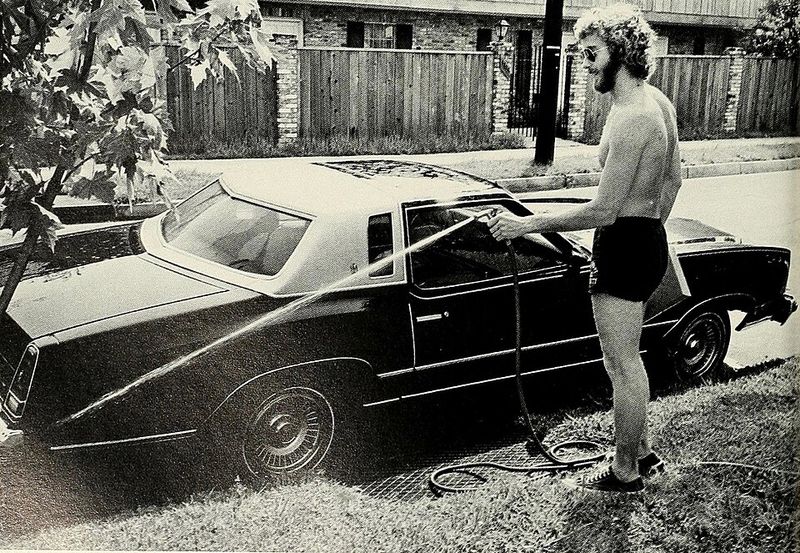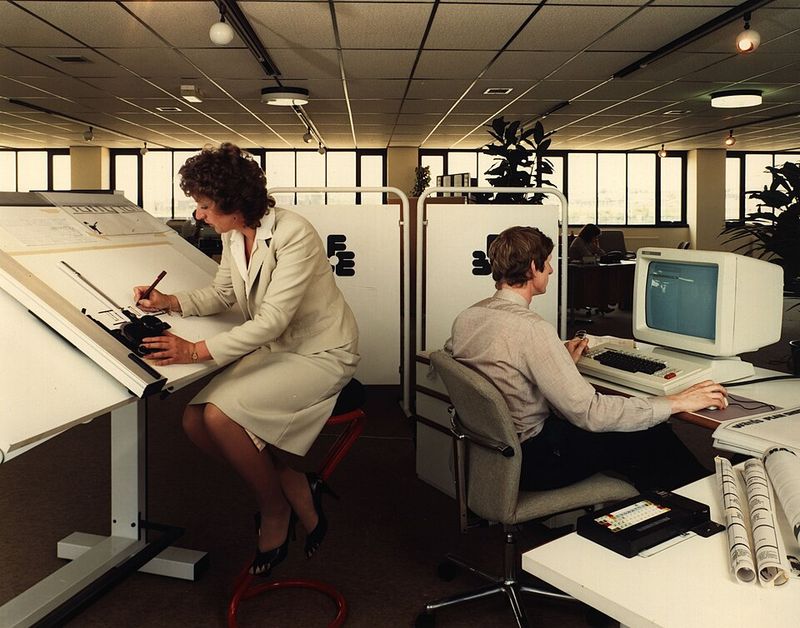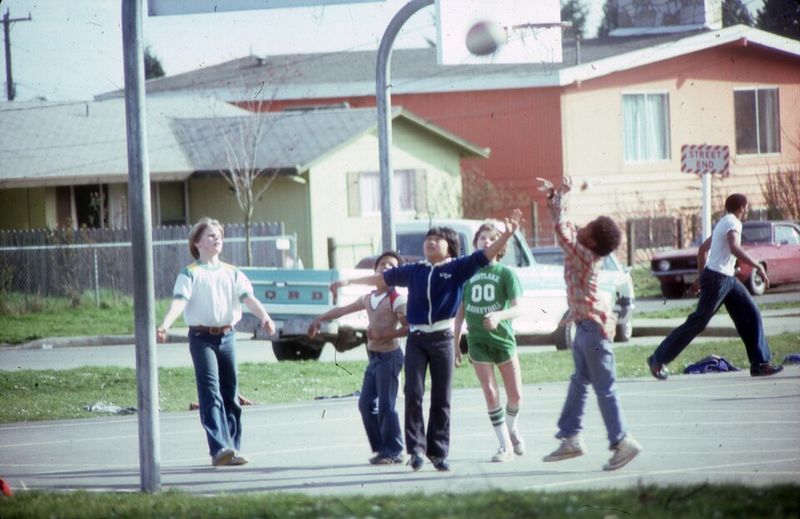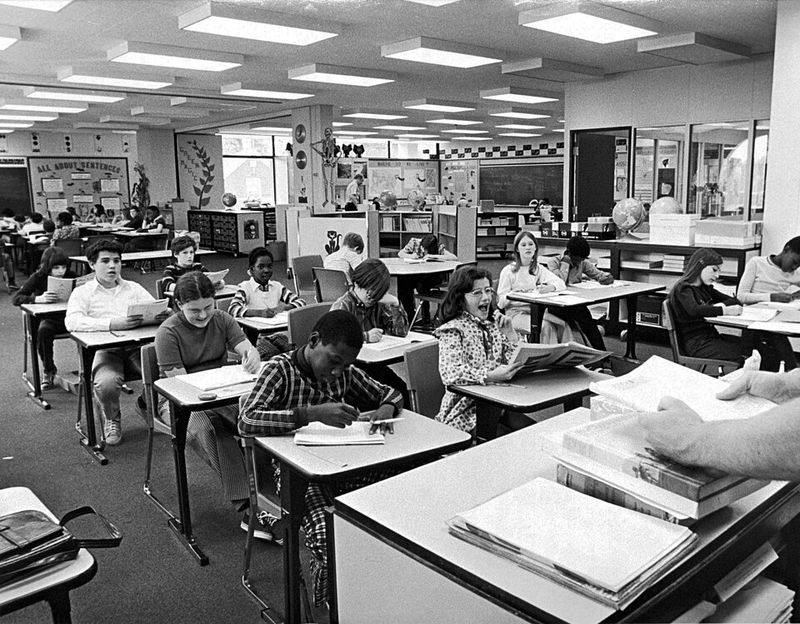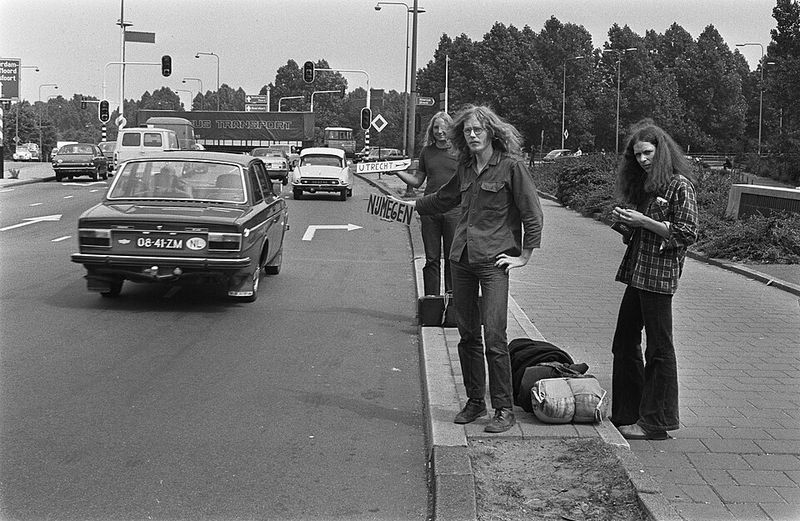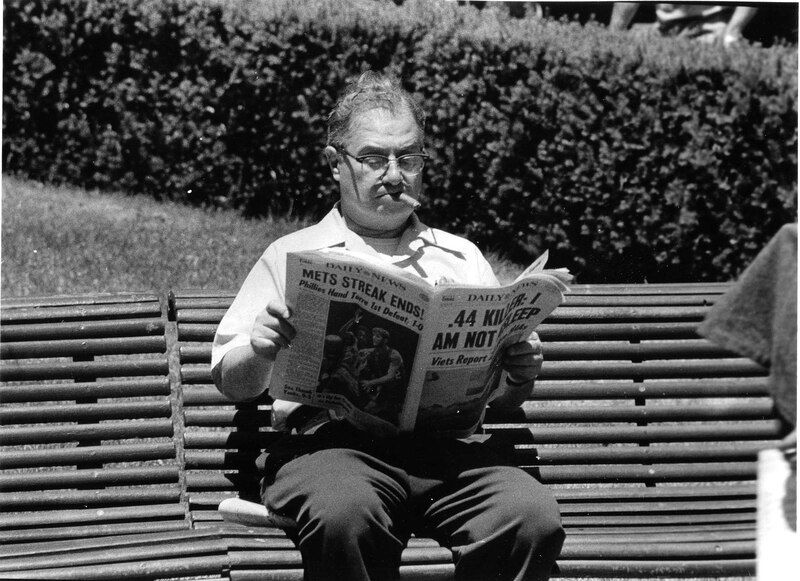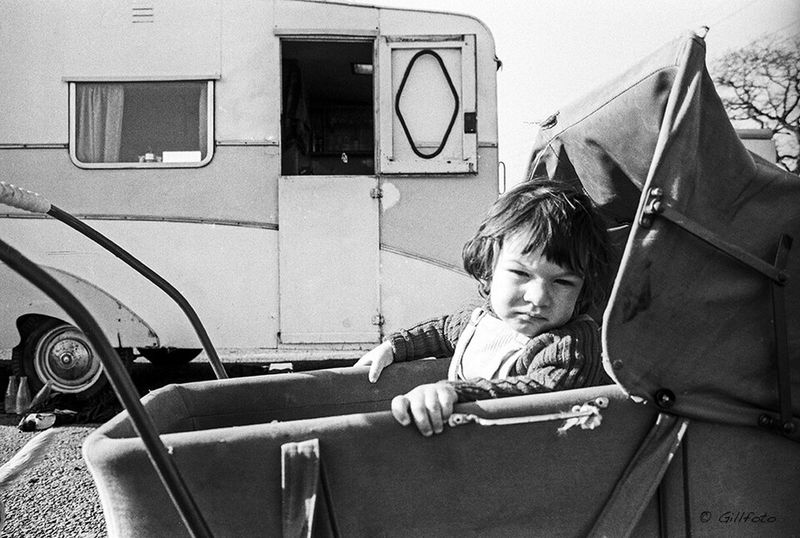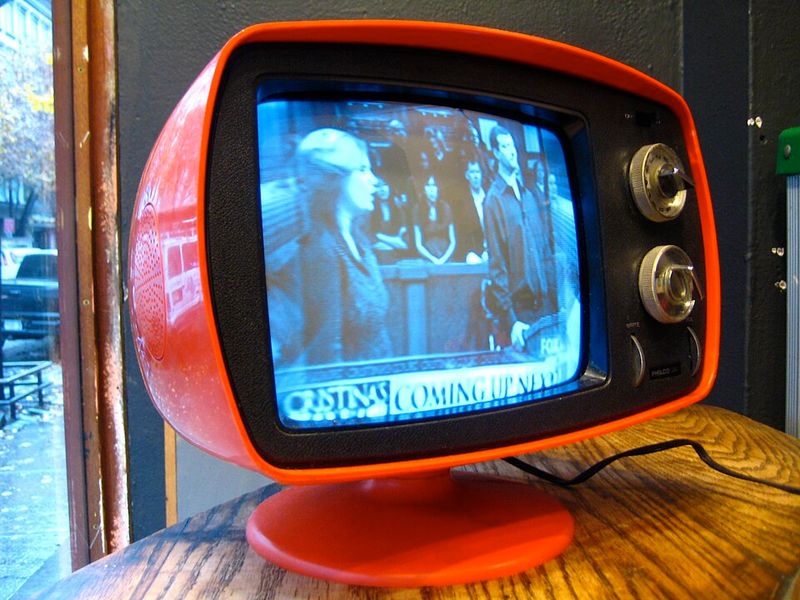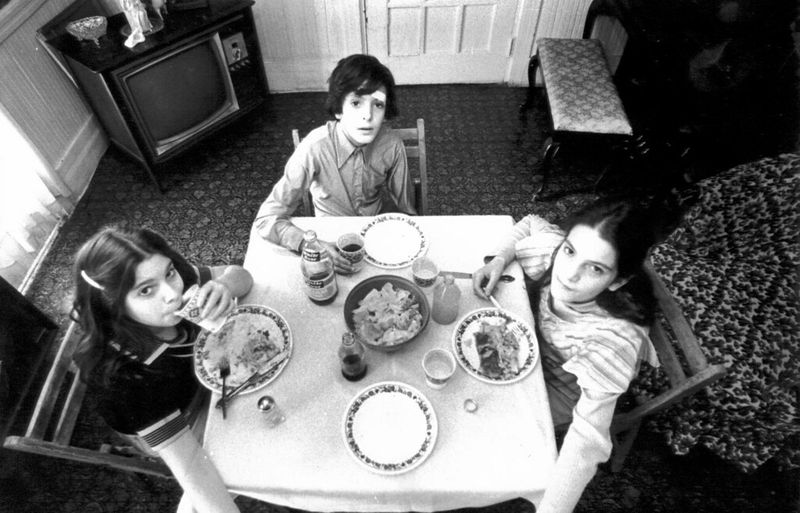The 1970s were a time of cultural vibrancy, marked by bell bottoms and disco balls. Yet, many societal norms from that era would be considered unacceptable today. From smoking in public spaces to unsupervised childhood adventures, here’s a look at 18 habits from the ’70s that simply wouldn’t fly now.
1. Smoking Everywhere
In the ’70s, smoking was not only allowed but commonplace in confined public spaces like airplanes, restaurants, and even hospitals. Ashtrays were as ubiquitous as seat cushions.
The health risks of secondhand smoke were not yet widely acknowledged, and societal attitudes towards smoking were much more relaxed. Today, strict smoking bans reflect a broader awareness of health implications, ensuring cleaner air when traveling or dining. The transition from smoke-filled rooms to fresh air is a testament to changing health priorities.
This shift in norms underscores a growing emphasis on public health and personal space.
2. No Seat Belts Required
In the ’70s, the idea of strapping in for safety was not a priority. Seat belts were often optional, and many vehicles lacked them altogether.
The casual approach to car safety was a stark contrast to today’s stringent seat belt laws. Modern regulations mandate seat belt usage, reflecting evolving standards that prioritize passenger safety. The introduction of mandatory seat belt laws in the 1980s highlights a significant shift towards accident prevention.
This change showcases an increased focus on safeguarding lives during travel.
3. Drinking and Driving
In the ’70s, having a drink and then driving wasn’t seen as particularly reckless. Social gatherings often ended with people hopping into their cars, slightly buzzed but lacking the apprehension we have today.
DUI laws were present but not as rigorously enforced, reflecting a more relaxed attitude towards alcohol consumption and road safety. Today, zero-tolerance policies and public awareness campaigns underscore the dangers of drinking and driving.
The transformation in legal standards represents a broader cultural shift towards prioritizing public safety and reducing accidents. The change saves countless lives annually.
4. Kids Roaming Freely
In a world without smartphones, children of the ’70s thrived on unsupervised outdoor adventures. They roamed the neighborhood, climbed trees, and explored without adult oversight.
This level of independence starkly contrasts with today’s closely monitored play, where parents often watch from a distance or via digital devices. Modern societal norms emphasize child safety and structured activities, reflecting heightened concerns about potential dangers.
The freedom of the ’70s can evoke nostalgia, yet current practices aim to provide a secure environment for young adventurers. Balancing freedom with safety remains a pivotal parenting challenge.
5. Casual Sexism
The workplace of the ’70s was rife with casual sexism. Women were often addressed as “honey” or “sweetheart,” and their professional roles were frequently diminished.
Advertisements also reflected gender biases, perpetuating stereotypes that are now challenged. Today, workplace equality and anti-harassment policies underscore a commitment to gender respect and inclusivity.
These changes reflect a broader cultural evolution towards gender parity and professional respect. The shift from casual sexism to a focus on equality marks significant progress in societal attitudes.
6. Riding in the Back of Pickup Trucks
A sunny day, a pickup truck, and a group of kids enjoying the breeze from the open bed—this was a common sight in the ’70s. Riding unrestrained in the back was a thrill that few worried about.
Today, such practices are illegal in most regions, reflecting increased awareness of vehicular safety. Seat belt laws and regulations now ensure passengers, especially children, are securely fastened.
This shift highlights how safety standards have evolved, prioritizing accident prevention and minimizing harm. The change is part of a broader movement towards protecting lives on the road.
7. No Helmets for Bikes or Skateboards
With the wind in their hair, kids in the ’70s rode their banana-seat bikes without a care—or a helmet. Protective gear was not part of everyday life, and safety concerns were minimal.
Today, helmets are standard, reflecting an increased emphasis on preventing head injuries. Educational campaigns advocate for bike safety, encouraging the use of protective gear.
This transition underscores a growing awareness of injury prevention and personal safety. The evolution of cultural attitudes towards protective gear reflects a commitment to safeguarding young adventurers.
8. Spanking as Discipline
In the ’70s, spanking was a common disciplinary tactic, both at home and in schools. Parents and teachers relied on corporal punishment to maintain order and instill discipline.
Societal norms have since shifted, with many states banning physical punishment in educational settings. Modern parenting focuses on alternative discipline methods that emphasize positive reinforcement and communication.
The change marks a broader understanding of child development and the impact of physical punishment. Today’s approaches reflect an evolution towards nurturing and respectful child-rearing practices.
9. Secondhand Smoke Exposure
In the ’70s, even non-smokers were engulfed by cigarette fumes in public places like restaurants and airplanes. Secondhand smoke was an inescapable part of daily life.
Awareness of the health risks associated with secondhand smoke was minimal. Today, smoke-free environments are the norm, supported by public health campaigns and legislation.
The transition to smoke-free public spaces highlights a significant evolution in health consciousness and environmental quality. This change reflects an increased commitment to protecting public health.
10. Littering Without Guilt
Imagine tossing a soda can out of a car window without a second thought. In the ’70s, littering was commonplace, and environmental awareness was still budding.
The environmental movement gained momentum in the latter part of the decade, promoting concepts like recycling and conservation. Today, littering is frowned upon and often penalized, reflecting society’s commitment to environmental stewardship.
This cultural shift underscores a growing responsibility toward preserving natural beauty and reducing waste. The change marks significant progress in environmental consciousness.
11. Unrestrained Pets in Cars
In the ’70s, pets freely roamed inside cars, often with heads joyfully protruding from open windows. The notion of pet restraints was virtually unheard of.
Modern awareness of pet safety has led to the development of harnesses and car seats designed specifically for animals. Many regions now have laws requiring pets to be secured during travel.
This evolution reflects a growing understanding of animal safety and the importance of protecting our furry companions. The change underscores a commitment to ensuring safe travel for all family members.
12. Physical Punishment in Schools
A classroom where students feared the paddle was a reality in the ’70s. Corporal punishment was widely accepted in schools and rarely questioned by parents.
Today, many educational institutions have banned physical punishment, focusing on more positive behavioral interventions. This shift reflects evolving views on child psychology and educational discipline.
The change signifies a broader cultural movement towards compassionate and effective teaching methods. The evolution reflects a dedication to fostering supportive learning environments.
13. Hitchhiking
With a carefree spirit, hitchhiking was a popular means of travel in the ’70s. People stood by the roadside, hoping for a ride from a friendly stranger.
Today, hitchhiking is seen as risky, with safety concerns dominating public perception. This change reflects a heightened awareness of personal security and the potential dangers associated with picking up strangers.
The decline of hitchhiking underscores a broader cultural shift towards more secure and reliable forms of transportation. The change highlights the importance of personal safety in travel decisions.
14. Lack of Childproofing
In a ’70s household, childproofing was virtually nonexistent. Parents didn’t think twice about leaving cleaning supplies within reach or having uncovered electrical outlets.
Modern parenting places significant emphasis on child safety, with various products designed to mitigate household hazards. Outlet covers, cabinet locks, and gated play areas are now standard.
This evolution reflects a growing concern for child safety and accident prevention. The change underscores the importance of creating a secure environment for young children.
15. Racist or Stereotypical Jokes
Laughter often came at the expense of marginalized groups in the ’70s, with comedians and TV shows freely making jokes now recognized as prejudiced.
Today’s media landscape emphasizes diversity and sensitivity, rejecting humor that perpetuates stereotypes. This change reflects an increased awareness of cultural representation and social justice.
The shift from inappropriate humor to respectful comedy marks a broader cultural evolution towards inclusivity. This change highlights the importance of empathy and respect in entertainment.
16. No Sunscreen or Seatbelt Campaigns
On sun-drenched beaches, tanning with baby oil was a common practice in the ’70s. Concerns about skin cancer or sun damage were minimal, and protective measures were rare.
Today, sunscreen is an essential part of sun safety, and public health campaigns promote its regular use. This reflects a growing awareness of long-term health risks associated with UV exposure.
The change highlights an increased focus on health education and proactive prevention. The evolution underscores a commitment to wellbeing and longevity.
17. No Technology Boundaries
In the ’70s, technology was a family affair with few boundaries. Televisions were always on, and phones rang without hesitation during dinner.
Today’s households often incorporate parental controls and designated screen times, reflecting a shift towards mindful media consumption. This change emphasizes the importance of balancing technology with family interaction.
The transition to defined technology boundaries represents a broader understanding of media’s impact on family life. This evolution underscores a commitment to fostering healthy digital habits.
18. Advertising to Kids
Saturday mornings in the ’70s were a paradise for children, filled with cartoons and alluring cereal commercials. Companies openly targeted young audiences with colorful mascots and catchy jingles.
Today, regulations restrict marketing to minors, aiming to protect children from persuasive advertising tactics. This change reflects a commitment to ethical advertising and child welfare.
The evolution in marketing practices underscores a broader societal dedication to supporting healthy development. The shift highlights the importance of responsible advertising towards children.
